Exercise Marshmallow was an exercise which took place on the bitterly cold night of 16 October, 1969, and the following day. One side, named Blueland and representing the West, was formed by a mixed force from the BAOR which included I Corps commanded by General Mervyn 'Tubby' Butler. The other side, named Redland and standing in for the Russians, was composed of 15 PARA (SV) and the 4th Canadian Mechanized Brigade Group. 4CMBG was also reinforced with a German Panzer Battalion of Leopard tanks. Their job, aided by 15 PARA, was to 'break through' the Iron Curtain towards the Weser river. 15 PARA were tasked with capturing Bad Nenndorf, the Springe gap and the Coppenbrugge complex. Three companies plus a HQ company took part in the Exercise. During Marshmallow, 15 PARA were renamed 415 Para Bn, while 4CMBG became 4 Orange Motor Rifle Division.
In the leadup to the Exercise, 15 PARA were involved in careful planning and training which involved Exercise Tomahawk earlier in the year. Their Adjutant, Pat Conn, recalled how their CO Joe Starling got a leg up on the opposition:
"In some ways the exercise had started for 15 PARA way in advance of the actual deployment to Germany thanks to the foresight of the CO, colonel Joe Starling. He was an unconventional soldier, General Tubby Butler recognised this and gave him the authority to use his initiative as well as the huge flexibility of 4 CMBG (really a light mechanised division) to, as he put it, wreck the complacency of his Corps and his Staff. Needless to say, the `Orange Enemy’ responded and did wreck his Corps exercise in short time.
He [Butler] really was the only one in Corps Headquarters who had a clue as to what was planned, and he helped to make it happen. For once his troops did not have a clue about what was to unfold in terms of a threat. They had got so used to `more of the same’ exercises that it was a huge shock to the system, and I suspect a few careers."
When the Exercise started, 15 PARA were deliberately dropped in 7 hours early, "at last light instead of midnight", 120 kilometres ahead of the advancing Canadians. They emplaned at RAF Gutersloh, with the first lift occurring at 1700. They were dropped by two USAF C130 aircraft on Rodenberg DZ and two Canadian Buffalo aircraft on Eldagsen DZ. One subsequent drop occurred at 1900 from a Buffalo. A third lift was cancelled due to fog, but 224 paratroopers had been dropped.
A Company, predominantly from Glasgow, was commanded by Major David Henderson and managed to 'destroy' a chieftain tank and an armoured recovery vehicle just hundreds of metres from where they dropped. The nearby Blueland armour began to fall back along Route 65 but was 'engaged' with 300 M72 anti-tank missiles which had been loaned to 15 PARA. The inactive vehicles were withdrawn from the exercise, forming up in a tank park.
One platoon of A Company of 21 men pushed into enemy territory, reaching a wooded hill overlooking Route 65 nicknamed Bug Jooce West. They had advanced out of radio contact but were led by Sgt Tom Doak by compass to reach their positions. Catching more of the retreating Blueland vehicles, they claimed a Forward Observation Officer and his party, two troops of Chieftain tanks, an Engineer HQ and a Company HQ. The platoon ate freshly picked apples and caches of captured food discovered by CSgt Sammy Cairns. They fought for another 24 hours after the rest of A Company had gone to bed.
B Company was commanded by Major Malcolm Robertson and consisted mainly of men from Aberdeen. Unfortunately, in phase one they only managed to get in one lift of men while the others waited for a helicopter assault. Their target was the city of Hildesheim.
C Company was commanded by Major Eric Ironside and consisted mainly of men from Edinburgh. They crossed a drainage canal and advanced through thick forest - six kilometres in six hours. They ran into a troop of tanks by chance and took them out. Led by Sgt Moffat they 'destroyed' a Blueland communications centre.
HQ Company was commanded by Major Pete Kelly, and had been converted into a small rifle company. Dropping at Rodenberg, they disappeared into the forest and found a whole squadron of Blueland tanks. The tank officers were away in a meeting so their armour was captured and marked with a maroon 'XV' in spray paint. One English 2nd Lieutenant had been left behind and popped out of his turret to complain, resulting in the following interaction:
"I demand to see an officer,' quoth he. Pete Kelly appeared, his craggy face blacked up for night ops, and, with the peak of his cap pointing slightly off to starboard and the point of his nose slightly off to port, he must have presented a fearsome sight. 'I am a f...ing officer,' he replied and slammed the turret lid down on the young man's fingers. The cavalry officer retired hurt to the depths of his mechanical monster to ponder whether fingers grow again and there was not a bit of trouble from the captured tank Squadron from then on."
After Phase One, Bad Nenndorf and the Springe gap were secured, but the Coppenbrugge gap was only partially held. The first 24 hours had been a historic success for '415 Para Bn' and '4 Orange Motor Rifle Division', as Pat Conn remembers:
"The execution of Marshmallow was sublime and certainly was talked about in Germany for a long time afterwards. Every man was turned into an anti-armour weapon with his 66mm destroyer, and the whole operation was commanded from a very flexible and lightweight foot-borne HQ. The CO with a Tac and with a very light Main HQ. The comms were vital, and this was made possible through the hugely fast advance by 4 CMBG and their incredibly fast Step-up HQ ops plus their massive rebroadcast efforts. They used Soviet based tactics, but Canadian application, and the speed of advance was paramount. They also understood the importance of seizing the gaps and then airborne troops creating mayhem in the rear areas. Within 24 hours, the General stopped the exercise, gave Orange forces a 48hr pause and told them to withdraw 40 kms. He held a quick debrief of his Corps (and I wish that I had been present at that one) got them sorted out once more and re-started with the gaps having been captured by Orange."
Phase two
After 24 hours the exercise had ground to a halt due to the success of the Russian/Redland side. Both sides were ordered back 40 kilometres to start the exercise again at first light the next day. 15 PARA joined up with the Canadians and their Brigadier General and were directed to seize reserve installations of the enemy. They were moved in by Wessexes and Canadian Hueys to LZs behind the Teutoberger Wald to secure four defiles before linking up once more with the advancing Canadians. For this second phase, the Companies were split into halves. Pat recalls the confusion this strategy soon caused:
"This time there were to be no paradrops, but 15 PARA turned into airmobile troops. With 4 CMBG barrelling forwards again, helicopter assaults were put in depth which created more fun and games. The pilots flew highly tactical routes which resulted in massive and often incorrect over reporting. The crunch came when we found out the locations of Corps Main and Corps Rear HQ, the CO gave me a platoon plus from HQ company and told me to attack Corps Rear, create some chaos, get them thinking about moving and then recover by helicopter, while he would take on Corps Main. We had eight Hueys and we planned a deep infiltration flight and as we got close started a series of planned `landings’ , take off, landings and so on creeping closer to Corps Rear. We knew that we did not have enough troops to take it out, but we created sufficient chaos and did sufficient `damage’ shorting cable runs, turning off generators, cutting any wires we could find as well as the chaos of an attack early in the morning. We got Corps Rear to up sticks and pull out as we were getting back in our Hueys. Corps Main was shocked, panicked and was on the move in chaos when Col Joe attacked. With both HQs moving the chaos was supreme."
Battalion HQ knocked out an armoured workshop and captured a tank transporter, whose driver switched sides and transported two platoons of 15 PARA with Brigadier Starling navigating with an AA Book. They defeated an artillery resupply column before reaching the Gasthaus where a battle was about to ensue. They had encountered the 1st Battalion, Gordon Highlanders taking a refreshment break and promptly captured several of their men and vehicles. Pat stated in his official combat report:
"in one extreme case, Echelon vehicles of an Infantry Combat Team were parked unguarded in the car park of a Gasthaus and the crews captured therein. The lesson from this aspect was the obvious one that administrative units must be properly concealed and prepared to defend themselves against surprise attack".
He later expanded on this episode and the aftermath:
"The journey of Colonel Joe and his tank transporter plus his Jocks across the Corps is the stuff of legend, and true. Order, counter-order and then total disorder, it was exactly what general Tubby wanted and he got it in spades. Colonel Joe and I were summoned to the Corps Staff debrief. We arrived dirty, camouflaged, still wearing our battle-order and carrying weapons with the Commander 4 CMBG. There was disbelief when he said that all the chaos had been brought about by careful planning, unconventional method, initiative and just 350 part-time paras. He told them how the whole thing Tomahawk and Marshmallow had been put together…he then turned round to us at the back and introduced Joe as the instigator of all their heartaches, the Commanding Officer of the 415 Parachute Battalion in support of the 4th Orange Motor Rifle Division. There were glares but no cheers".
A Company started phase two by helicoptering close to Gutersloh airfield, now in the hands of the enemy, but decided not to attack. They marched 25 miles to the Halle Gap and knocked out some Blueland armour, but not without difficulty:
"The first attack was deemed unfair because the cavalry were still in bed. The re-run was also ruled out of order because the Big A inconsiderately came from a direction the Brits had not expected. By the third attack on the same position the lads felt they had done quite enough to establish who was boss and the armour, humiliated at being bested by such dirty and uncouth people, let fly its pent-up fury with an incessant barrage of noise which made it difficult for the lads to settle down for a well earned rest after a long night's work".
Meanwhile, C Company found an APC and deactivated it. Attacked with tear gas, they took the gas masks off their enemies. They used captured vehicles to reach their next objective of the Knoll Gap. They joined in the battle of the Gasthaus (inn), claiming a troop of APCs by sacrificing one section.
Pat sums up the whole exercise by offering this anecdote about the fallout:
"Several months later a letter arrived from HQ 1 (BR) Corps in Bielefeld with an invoice for several hundred pounds equivalent for the misuse of service transport, specifically the cost of fuel. I was highly amused, took it to the CO and asked how I should reply. He grinned, said `photocopy every Scottish bank issue of high denomination notes on one side only (and there were several, Bank of Scotland, Royal Bank of Scotland, Clydesdale to name but three) and send them off with the remark 'I like your sense of humour – Commander 415 Para Bn’! There was no response."
After Phase two, all four Teutoberger defiles had been occupied, although one was not secure. During Marshmallow, 15 PARA had 'destroyed' 131 armoured vehicles and 17 unarmoured, for a total of 148.
The Pegasus journal stated of the exercise:
"The Jox enjoyed themselves enormously; treading only very gently on German toes during their leisure moments. Nobody really upset the bratwurst cart and we got the whole Battalion home intact. It's good to be an Airborne soldier".
Source:
Compiled with information from:
The Pegasus Journal, January 1970, pp. 32-35.
Soldier On! The Testament of a Tom by Brigadier Joe Starling, pp. 73-75.
Airborne Assault Archive (box 2.B.3 26.15.2 and box 2.B.4 26.15.3).
Article written by Alex Walker with contributions and commentary from Pat Conn
Read More
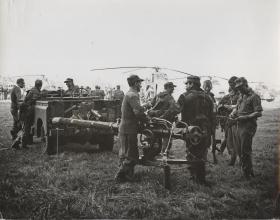
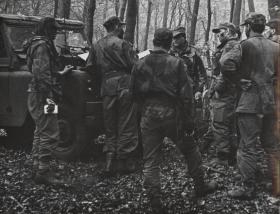
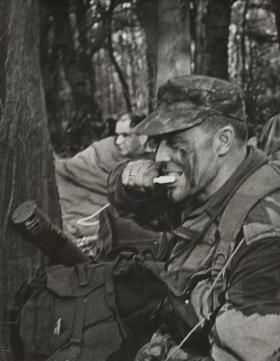
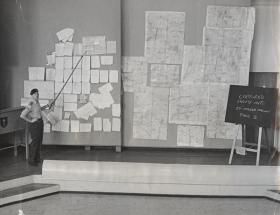
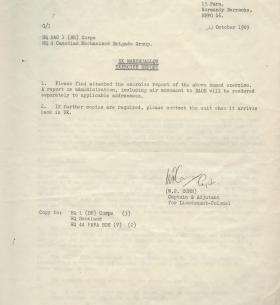
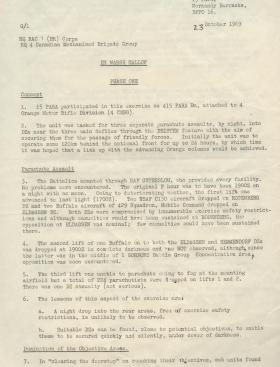
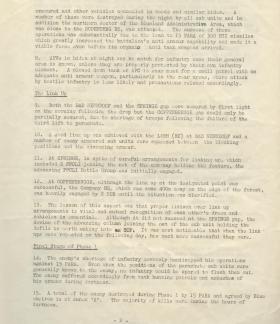
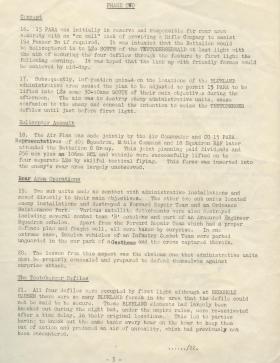
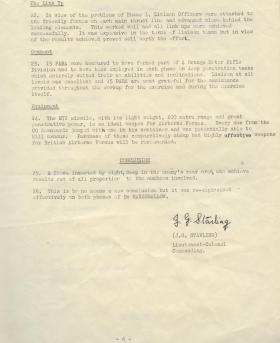
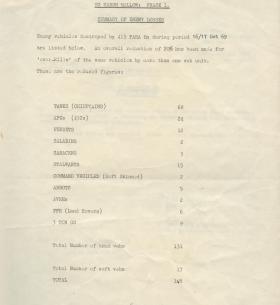
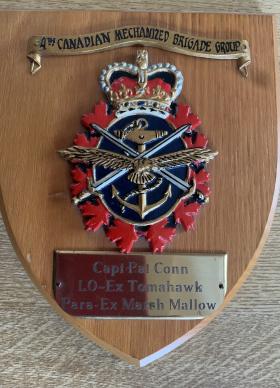
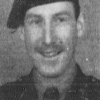
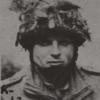
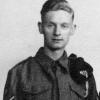
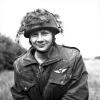
Latest Comments
There are currently no comments for this content.
Add Comment
In order to add comments you must be registered with ParaData.
If you are currently a ParaData member please login.
If you are not currently a ParaData member but wish to get involved please register.